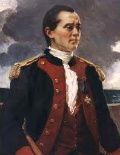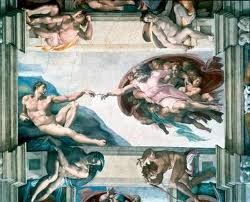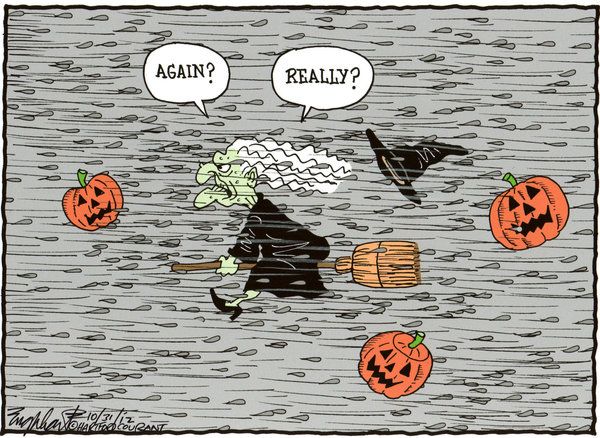Cross posted from The Stars Hollow Gazette
This is your morning Open Thread. Pour your favorite beverage and review the past and comment on the future.
Find the past “On This Day in History” here.
November 4 is the 308th day of the year (309th in leap years) in the Gregorian calendar. There are 57 days remaining until the end of the year.
On this day in 1922, British archaeologist Howard Carter and his workmen discover a step leading to the tomb of King Tutankhamen in the Valley of the Kings in Egypt.
The British Egyptologist Howard Carter (employed by Lord Carnarvon) discovered Tutankhamun’s tomb (since designated KV62) in the Valley of the Kings on November 4, 1922, near the entrance to the tomb of Ramesses VI, thereby setting off a renewed interest in all things Egyptian in the modern world. Carter contacted his patron, and on November 26 that year, both men became the first people to enter Tutankhamun’s tomb in over 3000 years. After many weeks of careful excavation, on February 16, 1923, Carter opened the inner chamber and first saw the sarcophagus of Tutankhamun. All of this was conveyed to the public by H. V. Morton, the only journalist allowed on the scene.
The first step to the stairs was found on November 4, 1922. The following day saw the exposure of a complete staircase. The end of November saw access to the Antechamber and the discovery of the Annex, and then the Burial Chamber and Treasury.
On November 29, the tomb was officially opened, and the first announcement and press conference followed the next day. The first item was removed from the tomb on December 27.
February 16, 1923 saw the official opening of the Burial Chamber, and April 5 saw the death of Lord Carnarvon.
On February 12, 1924, the granite lid of the sarcophagus was raised In April, Carter argued with the Antiquities Service, and left the excavation for the United States.
In January 1925, Carter resumed activities in the tomb, and on October 13, he removed the cover of the first sarcophagus; on October 23, he removed the cover of the second sarcophagus; on October 28, the team removed the cover of the final sarcophagus and exposed the mummy; and on November 11, the examination of the remains of Tutankhamun started.
Work started in the Treasury on October 24, 1926, and between October 30 and December 15, 1927, the Annex was emptied and examined.
On November 10, 1930, eight years after the discovery, the last objects were finally removed from the tomb of the long lost Pharaoh.


 After departing Brest, Jones successfully executed raids on two forts in England’s Whitehaven Harbor, despite a disgruntled crew more interested in “gain than honor.” Jones then continued to his home territory of Kirkcudbright Bay, Scotland, where he intended to abduct the earl of Selkirk and then exchange him for American sailors held captive by Britain. Although he did not find the earl at home, Jones’ crew was able to steal all his silver, including his wife’s teapot, still containing her breakfast tea. From Scotland, Jones sailed across the Irish Sea to Carrickfergus, where the Ranger captured the HMS Drake after delivering fatal wounds to the British ship’s captain and lieutenant.
After departing Brest, Jones successfully executed raids on two forts in England’s Whitehaven Harbor, despite a disgruntled crew more interested in “gain than honor.” Jones then continued to his home territory of Kirkcudbright Bay, Scotland, where he intended to abduct the earl of Selkirk and then exchange him for American sailors held captive by Britain. Although he did not find the earl at home, Jones’ crew was able to steal all his silver, including his wife’s teapot, still containing her breakfast tea. From Scotland, Jones sailed across the Irish Sea to Carrickfergus, where the Ranger captured the HMS Drake after delivering fatal wounds to the British ship’s captain and lieutenant.
 As you all must have noticed at this point ek hornbeck & I have been absent for the last few days. The good news is that we and our families are safe, sound & dry. That’s about it for the good news.
As you all must have noticed at this point ek hornbeck & I have been absent for the last few days. The good news is that we and our families are safe, sound & dry. That’s about it for the good news. Houdini was born Erik Weisz in Budapest in 1874, the son of a rabbi. At a young age, he immigrated with his family to Appleton, Wisconsin, and soon demonstrated a natural acrobatic ability and an extraordinary skill at picking locks.
Houdini was born Erik Weisz in Budapest in 1874, the son of a rabbi. At a young age, he immigrated with his family to Appleton, Wisconsin, and soon demonstrated a natural acrobatic ability and an extraordinary skill at picking locks. The eyewitnesses, students named Jacques Price and Sam Smilovitz (sometimes called Jack Price and Sam Smiley), proferred accounts of the incident that generally corroborated one another. The following is Price’s description of events:
The eyewitnesses, students named Jacques Price and Sam Smilovitz (sometimes called Jack Price and Sam Smiley), proferred accounts of the incident that generally corroborated one another. The following is Price’s description of events: